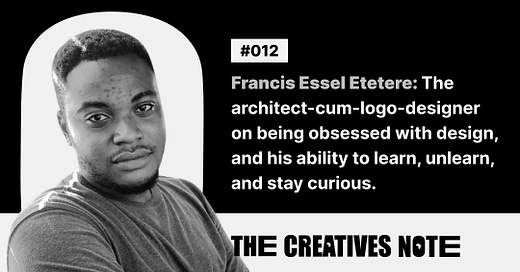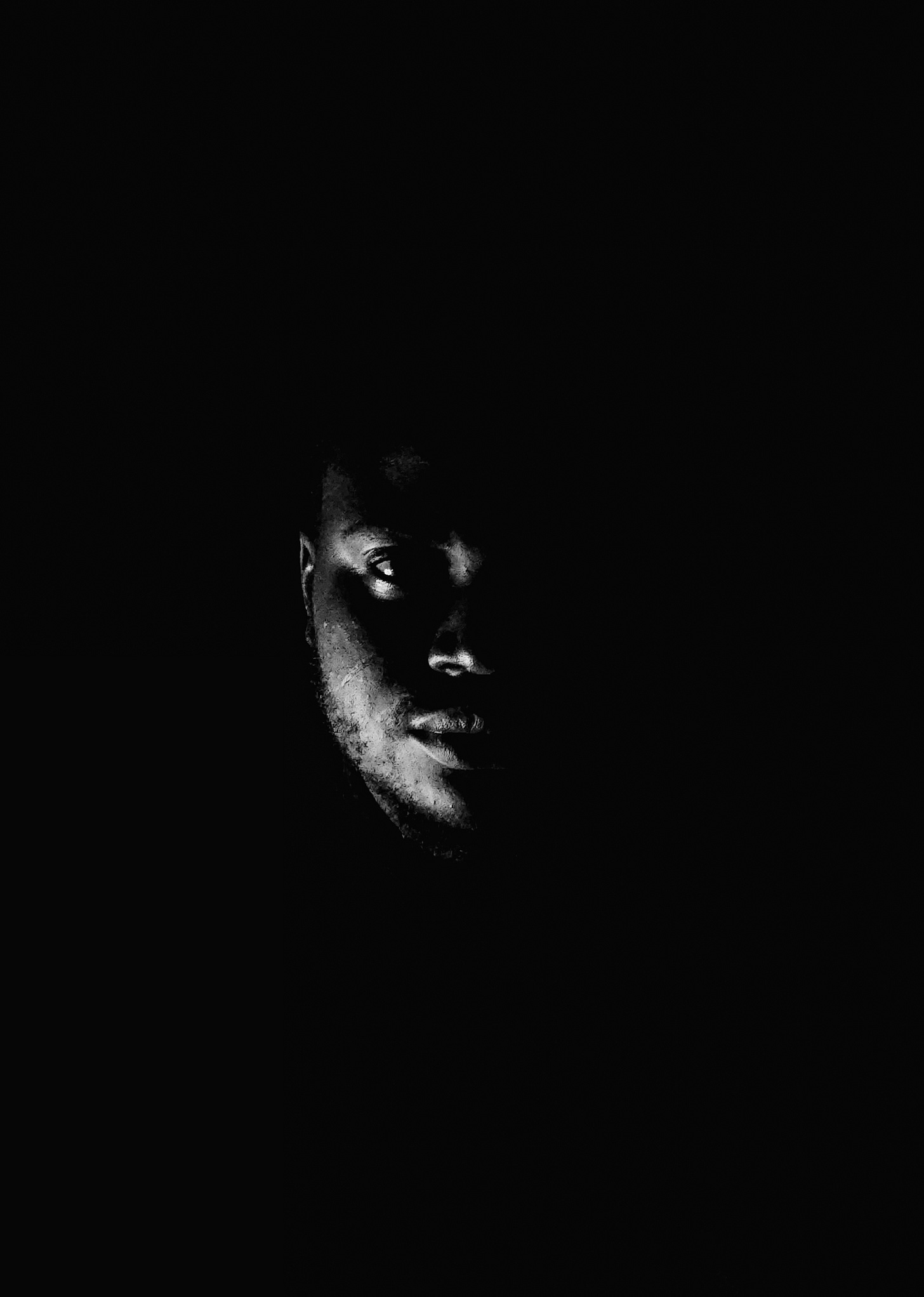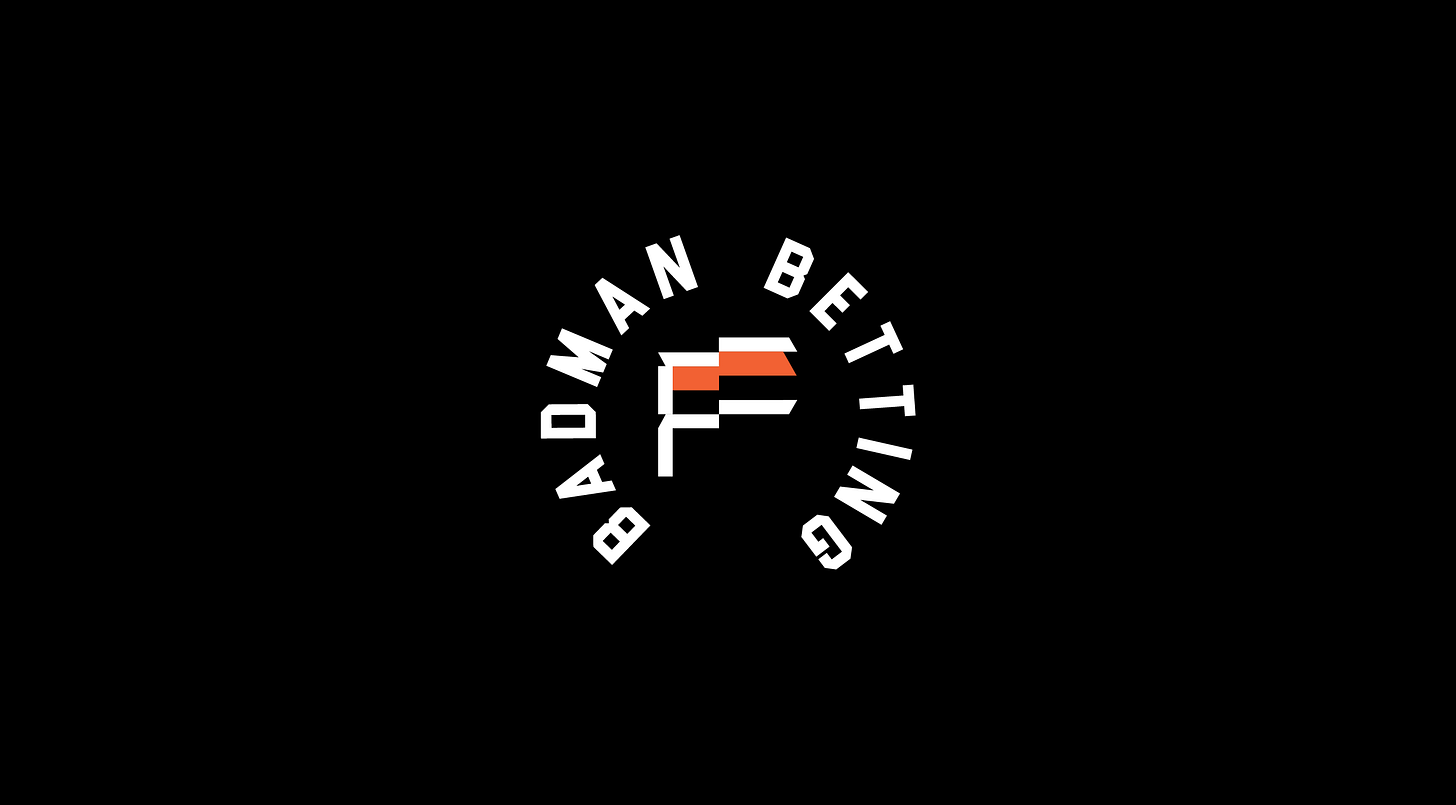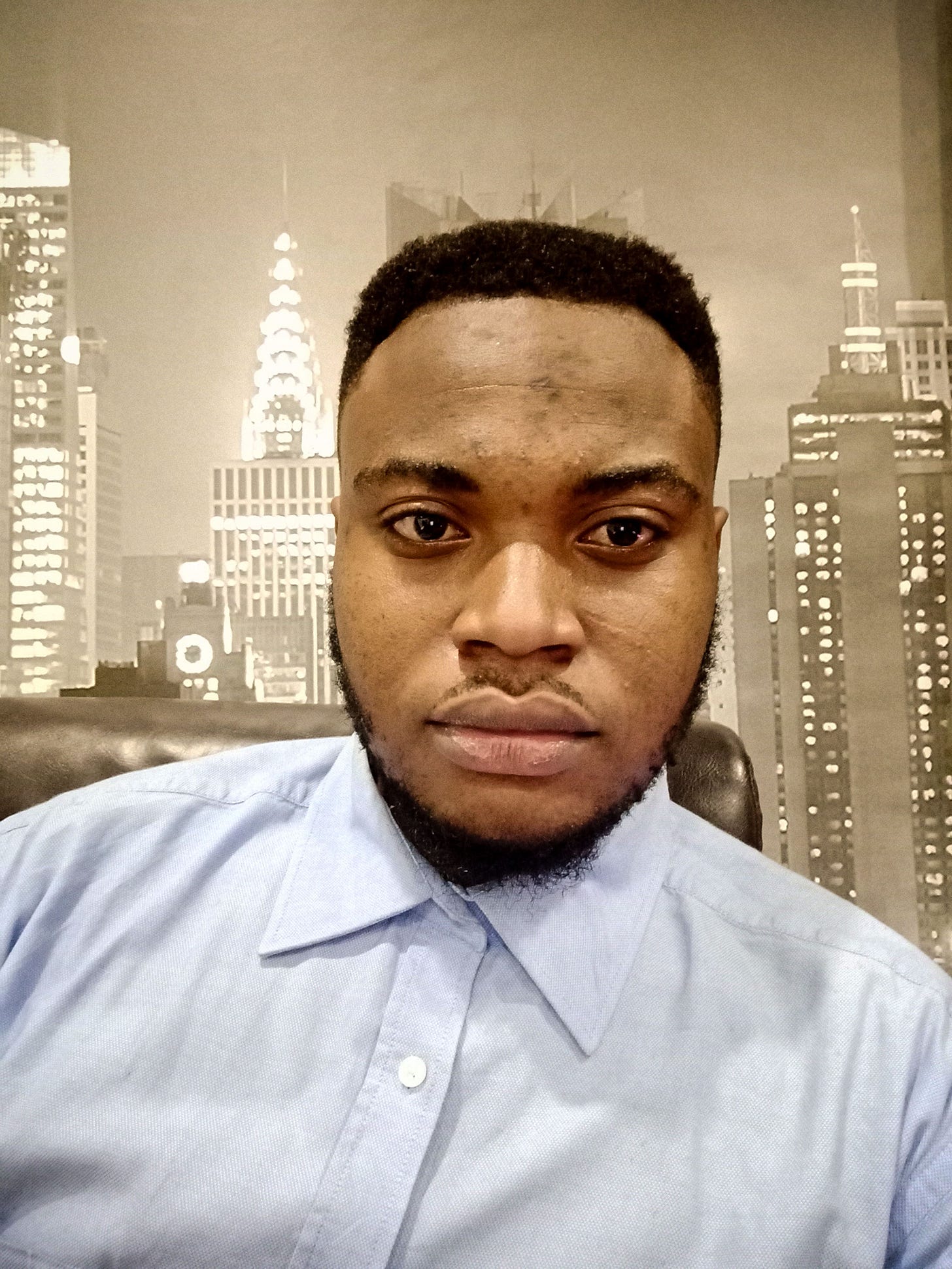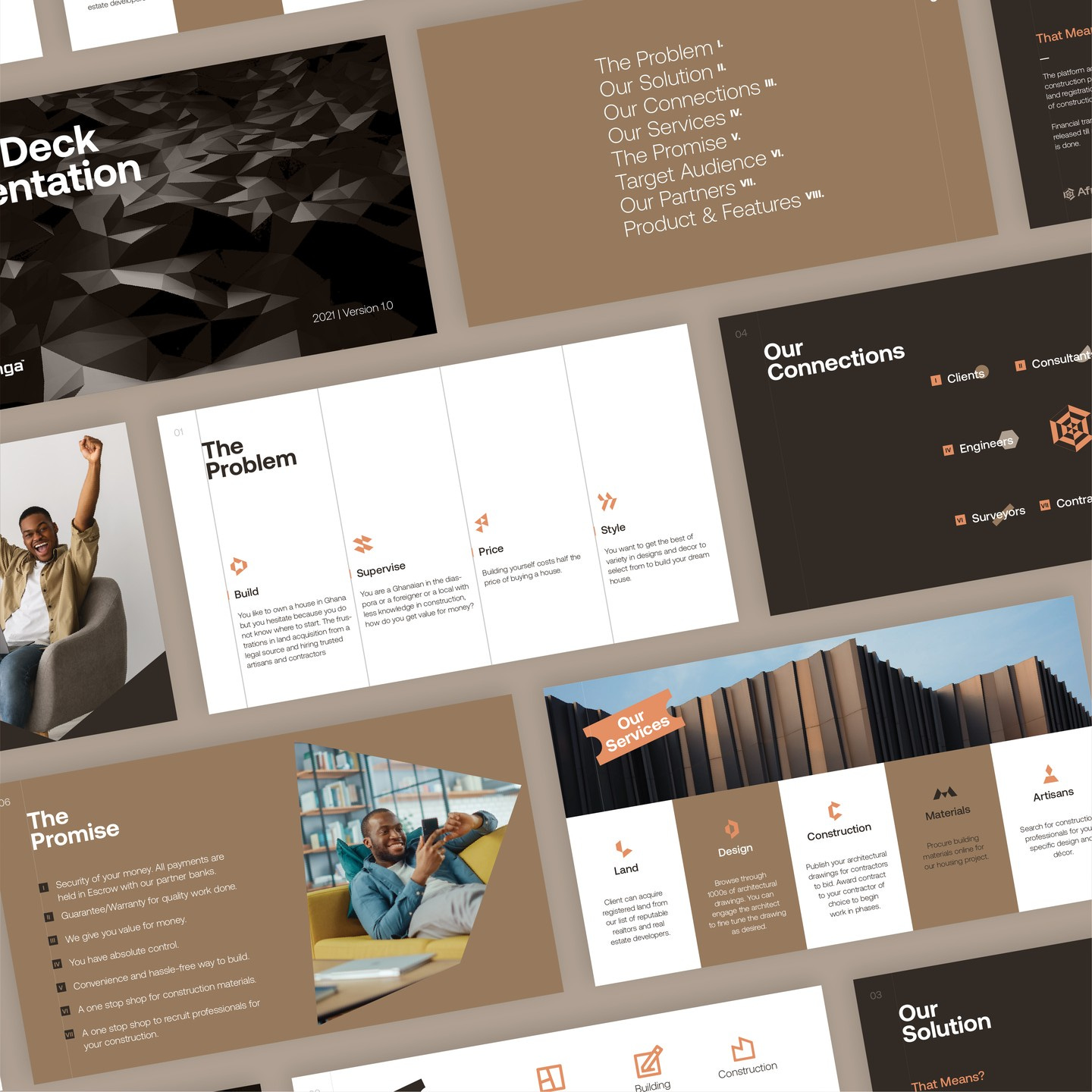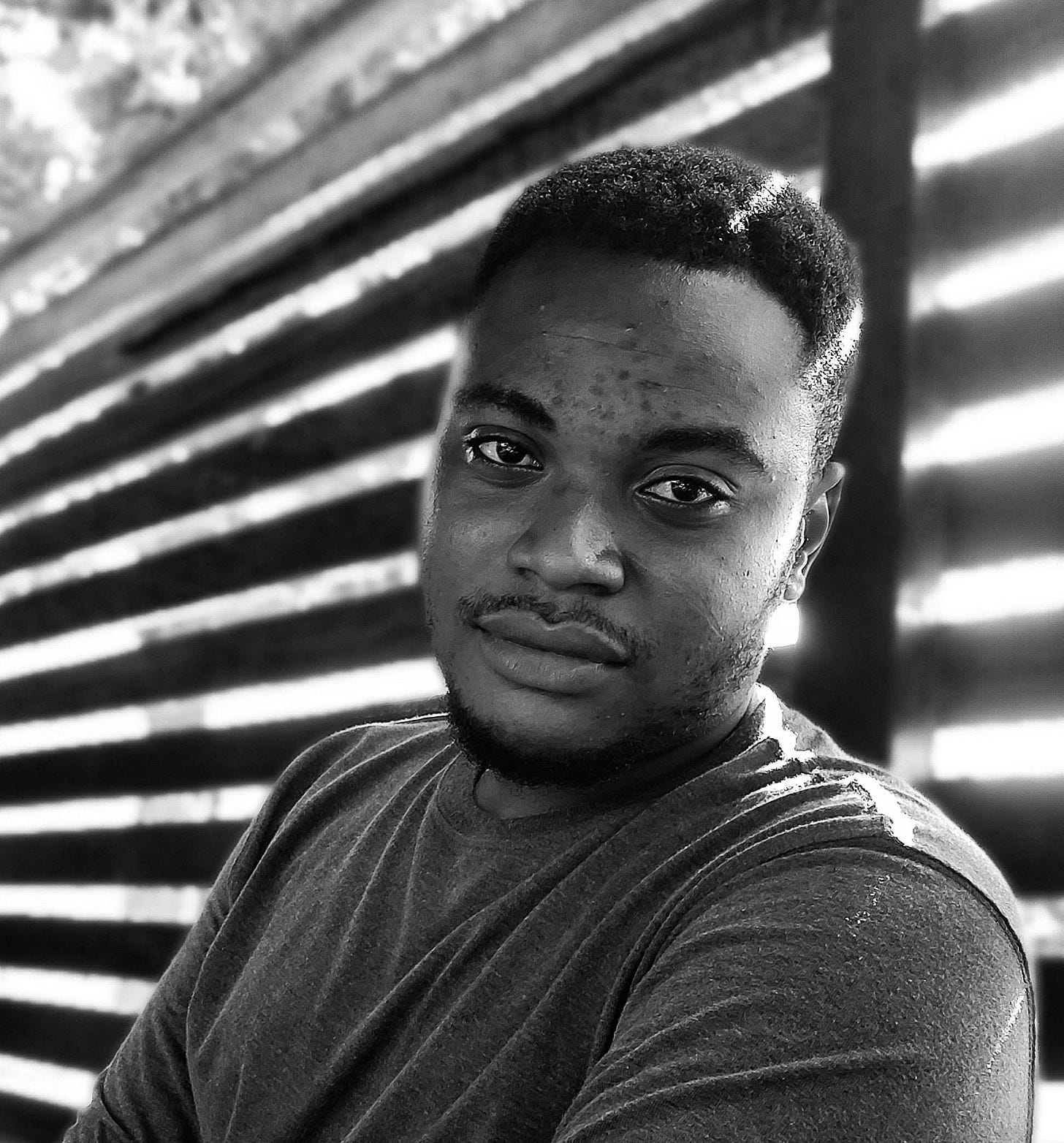Francis Essel Etetere: The architect-cum-logo-designer on being obsessed with design, and his ability to learn, unlearn, and stay curious — #012
Borne out of necessity, design was an escape to find some sustenance. I see myself as a builder and maker of things, intrigued by creating experiential experiences and the resulting impacts on users.
Hi, thank you for joining us for another edition of our interview with African Creatives. In this edition, I spoke with Francis Essel Etetere, an independent creative designer specializing in logo and brand design, architecture, and curating, is presently based in Accra, Ghana. He describes himself as a very curious and experimental person who has made strides in his journey, due to his openness and readiness to be willing to constantly learn and unlearn.
If you are interested in knowing what drives the work he does, the major challenges he faces and how he navigates them, his favourite projects, how he spends his day, how he navigates creative block and client rejections, the people that inspire him, and the people and brands he would love to work with, you should continue reading. You will definitely love and enjoy reading this!
Tell us about yourself.
My name is Francis Essel Etetere. I am an independent logo strategic brand designer, architect, and curator; presently residing in Accra, Ghana but catering to a global audience. My practice has largely been focused on crafting meaningful and intentional experiential experiences, by transforming unrefined ideas into tangibles and helping in shaping perceptions — be it through brand, spatial design, or storytelling. Basically, I help you build or make things that aid you to communicate better, create connections, provide you with comfort, or make you money.
I see myself as a very curious person, with a high propensity to be willing to learn, unlearn, and experiment. I am not afraid to fail forward. This has offered me the opportunity to wear several hats in various capacities across diverse industries — as a Project Architect, Logo and Brand Design, Creative Director, or even Design Lead. And in recent years, as a Curator with the Logo Archive team at Logo Archive Ghana.
How did your design journey begin? What led you to this path?
As the usual cliché creative’s story goes, having a knack for drawing as a kid, particularly, cartoon characters. I did lose interest as I grew though. I have always been one for never being certain where the path may lead. I somewhat enjoyed school and was sort of considered “academically inclined”, so everyone believed I would end up in science, law, or something along that line — the usual stereotypes. But when I got into high school, I didn’t want to do science. I wanted to do something along the lines of art or a mix of everything else, even though I wasn’t sure why. In conversation with arguably one of my favourite teachers, Mr. OPJ Amankwa; he suggested Architecture because it gave me the flexibility to combine drawing with geography, history, science, and several interests I had developed over the years.
So for my tertiary education, I did get into the architecture program. During my final year as an undergraduate, born out of necessity I must say, I had a moment of reflection to find ways to self-sustain myself. Mother had passed away several years back in 2011, and Father had been unwell and struggling, later to also pass in 2022. Though university was a struggle and architecture financially draining, it hadn’t hit as hard as that final year did. I nearly dropped out then. Until — enter graphic design. So basically the need to find financial stability — sapa. Lol.
What made you decide to pursue this as a career? How would you describe the journey so far?
I made the decision when I was still working at a private architectural company, undergoing the mandatory one-year national service in Ghana. I learnt a lot from there and am always forever grateful for the opportunity with them.
Initially, I had doubts about doing graphic design full time but I became obsessed with anything design. I would spend hours on end looking at people’s work. I felt so mesmerized by what I saw and really wanted to do the same and more. Someone had taken a chance on me some years back for a full-time gig that lasted two years, creating graphics, posters, and identity design. I enjoyed every bit of it and it paid decently at the time. So I decided to focus on it and see where the path leads me.
As for the journey so far, I would say it has been filled with lots of learning and unlearning.
How would you describe what you do to a 5-year-old?
Imagine turning cool ideas into playthings, signs, buildings, pictures or money. That's what I do!
What is your day-to-day routine? What does a typical day look like for you?
To a lot of people, I come across as pretty organized but my days are sometimes all over the place and not structured. There are days I take off to do administrative work and on other days, I work on projects but it is not always so.
My typical day starts early, because of trauma from boarding day high school alarm bells. My early morning is usually me trying to stay abreast of the things going on in my community and around the world. I also try to check out other people’s work across different platforms to get inspired. I have my breakfast early too.
After this, I spend the majority of the day trying to get work done. I tackle my tasks as I need to. I attend meetings too if I have one scheduled for the day because I don’t have days designated for meetings. I work till late afternoons. Unlike some creatives, I don’t like working at night so I sleep early. Also, I don’t take coffee or caffeine — I’ve never taken coffee in my life. I try to do everything I have to do during the day and make sure to take lots of breaks in between.
What do you enjoy most about what you do? What is the most satisfying thing about your job?
The most enjoyable thing for me is the opportunity to unlearn and learn new things. The opportunity to connect with people and businesses and the idea that whatever I do can have an impact on people. My work has afforded me the opportunity to learn about other people’s experiences, businesses, thoughts, and what they are going through, and has helped me address any convictions and assumptions I may have had.
What is the best career investment you have made as a creative?
It is staying curious and being open-minded because there’s so much we think we know that we don’t know and can only learn if we are willing. I treat each and every project and task as a learning opportunity, with an opportunity to always add to what I may already know or not know.
Being kind to myself, being intentional about my time, and efforts to consistently get better at my craft too, have helped. And surrounding myself with the best of people and curating the best of information. I have folders for everything.
Related interview
What are some of the challenges you face as a creative?
There have been times I have been unmotivated, stressed, or simply tired. There are times you could also get so emotionally invested in your work, to the point where any negative remarks almost make you doubt your competence and question your capabilities. Being also self-taught, and coming from the background I was coming from, financial constraints at the time were a huge problem, especially when you needed to find the best courses or upgrade devices. Also the fear of missing out, sometimes.
How do you navigate this challenge?
I try to detach myself from work. This is difficult to do because I love everything I do but I try. I have come to realize it is probably not me or my work that is the problem. I take a step back and take another look at everything I am doing.
Also, despite my parents being no more, I have quite a very good support system. My partner has been there from the beginning and has been very supportive. I have also made great friends who have been very supportive and believe in me and my work.
What is your creative process for getting work done?
My process, I believe is similar in some regards to that of most designers, albeit with a heavy emphasis on research, explorations, and presentations. My process starts with a lot of interaction and conversation with the client. Once I know and understand what the problem is, finding a solution becomes second nature. Asking the right questions easily helps half-solve the problem.
I make sure to keep the process as collaborative and informative for the client as possible, through steady communication and presentations at every phase. Also, with plenty of room for feedback and input.
What part of this process do you enjoy the most?
It is a mix of the research and logo design phases. I like the opportunity of researching a company and coming up with a mark. I enjoy exploring ideas based on research. I usually explore as many ideas as possible for this phase.
What are the essential gadgets, tools, and software you use for work daily?
Illustrator and I are best friends really. With Photoshop more like my ex-best friend. In recent times, InDesign has equally been helpful. I like to use a pen or pencil and paper too. Google Keep, Samsung Notes, and Notion are my go-to’s for documenting things. And in recent times, ChatGPT too. I mean, can you not?
I work on my laptop and I am #TeamMouse. I have used a digital tablet but it wasn’t really it for me.
How did the Covid-19 pandemic and lockdown impact you and the work you do as a creative?
Pre-pandemic, I was all over the place, having a hard time balancing architecture schooling; a Masters at this point, with my practice as a part-time architect and a logo and identity designer. The lockdown gave me the opportunity to slow down, reorganize, and plan the next steps.
How do you handle creative blocks and client rejections when working as a creative?
Staying constantly inspired and motivated by the works of fellow creatives and agencies has been my escape in moments where I may have had near creative blocks. I don’t get intimated or demotivated by what creatives are churning. I feel emboldened that with time and intentional effort, I could also hit such milestones.
In my earlier years, client rejections were and have never been demotivators. They were mostly opportunities for me to reconsider what may not be working, review what I may have missed or wasn’t communicated properly and update accordingly. With time, I learned to revise and improve my process and communicate more clearly, and this helped reduce the probability of any rejections. It became very collaborative. I began to also curate the kind of clients and work I accepted and have been fortunate to work with some amazing people in recent times.
What is the task you don't enjoy doing but you have to do?
It would be reaching out to clients for projects. The idea of looking for work when there are no projects to work on is something I rarely enjoy — cold calling or emailing. I enjoy working on passion projects instead. I particularly love to document and organize my files and assets, but I highly dislike the time it takes. It could easily be an all-day.
What are some of the most exciting projects you have worked on?
I enjoyed working on the DrinkWell project. They are a wine import company based in California. The task was to help elevate the brand by capturing the feel and mood of a young brand striving to change the elitist narrative of the wine industry, through storytelling and fun visuals that appeal to the masses and create an open experience for all.
Sanshu! is a Web3 Entertainment Network created by Sanshu! Studios, based in New York. They sought to turn their manga-inspired story "The Myth of Sanshu" into a Web3 Franchise. I collaborated with the Broworks team in Pančevo (Serbia) and oversaw the refresh of the logo and identity, culminating in the development of its accompanying brand guidelines.
I also enjoyed working on Bad Man Betting (BMB), Deepen AI, and PulseBet.
I also love the Brand Design and Art Direction Compendium I put out recently.
How do you stay creative and motivated to keep creating?
It is the idea that I can create something that will have so much impact on people. And the fact that so many people can resonate with what I do. Also, the fact that people are inspired by what I do, keeps me going.
How do you have fun and relax?
I pretty much have a sweet tooth for everything, particularly sports, movies, and music. I enjoy gaming from time to time. I used to be an avid reader, albeit now not so much. I do attend art openings from time to time.
I am particularly not much of an outing person, so not one for parties, weddings, or much nightlife. I enjoy the indoors and some much-needed alone time.
Who are the creatives that inspire you?
In my formative years, I looked up to and still do follow Tola Alabi and Kunle Yoloye (Yox).
I am also inspired by lots of creatives, an exhaustive list if I should say, but primarily the works of Mariam Issoufou, Nick Pattison, Jessica Strelioff, Mike Smith, Mike Sullivan, and the folks at Porto Rocha, Motto, and DC International.
Who are the people you would love to work with or collaborate with?
Ogbeni Seyi of Dadesign Studio, Keli Studio of CaveLantern, Fungi Dube, and Hadeel Sayed Ahmad.
What brand/company would you love to work with?
Samsung, Asus ROG, DixonBaxi, Focus Lab, Balkan Bros, and Effect Studios.
What would you be doing if you were not a designer?
I am particularly big on learning and unlearning. So it would have been anywhere that gives me the opportunity to do so — likely creative work, some research, history, and coaching (both as a professional football coach and as a design mentor).
What advice do you have for someone who is at the early stage of their creative journey?
I would say, stay the course and trust the process. Be kind to yourself and be mindful that your journey and story are different from others. Be patient to experiment, explore, learn, unlearn, make mistakes, and try as much as possible. Be intentional about your consumption, because the people you learn from, somewhat have an influence on who you become.
Do not go searching for mentors from the get-go. Learn from far, and practice more. The availability of the people you look up to, to make time for you, may not always be guaranteed. You are not the only one looking for them. Learn with your peers, collaborate, and motivate one another. Stay on course because success won’t happen overnight.
Read also
What would you consider success and fulfilment in your career when you look back in the next 20 years?
Tough one. 20 years is really quite the stretch. But I believe, it would most likely be around the impact I may have had and the legacy created in the process — the people I would have been opportune to work with and help nurture; the accesses my existence, presence, and stories would have created for others, especially those who come from similar backgrounds as I did, one of quietly struggling but publicly looking okay to the outside world. To see others having major wins and successes, just because of having been in contact, whether passively or actively with me. Their wins and joys would likely give me all the contentment and fulfilment there is. And to make the people who believed in me, my family, and my parents proud. That should be enough for me.
Whose story would you love to read about?
Tola Alabi and Kunle Yoloye.
Do you have anything you would like to plug in or promote?
Connect with me on iametetere everywhere.
Find my Free Presentation Slides of the "Branding with Confidence: Making Logos That Work" session with Àșà Coterie here.
Thank you for sharing with us!!!
Connect with Essel on Instagram, LinkedIn, and Twitter. You should also check out his work and writings on Behance and Medium.
Thank you for reading. To support us, please like and share this interview.
I know you enjoyed this, you should consider subscribing.
See you next time!!!
Follow us on Twitter, Instagram, and LinkedIn to stay up to date.


